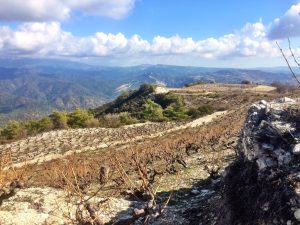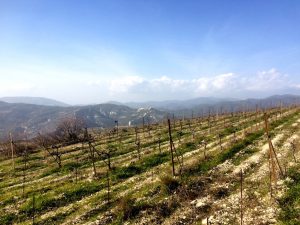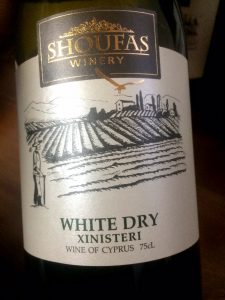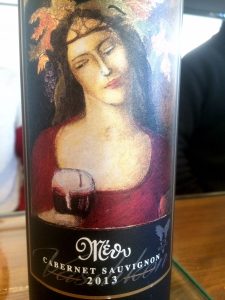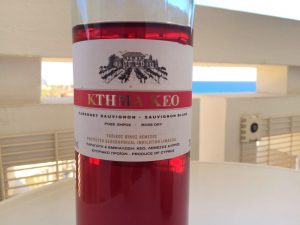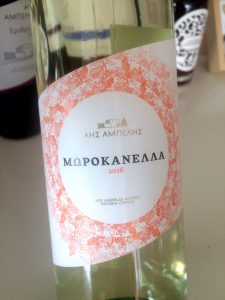Facing Our Fears: Cypriot Wine
Reading Time: [est_time] Renowned wine critic Jancis Robinson said in 2013, "Some of the worst wine I have tasted since I started writing about wine was what was available the one time we went on holiday
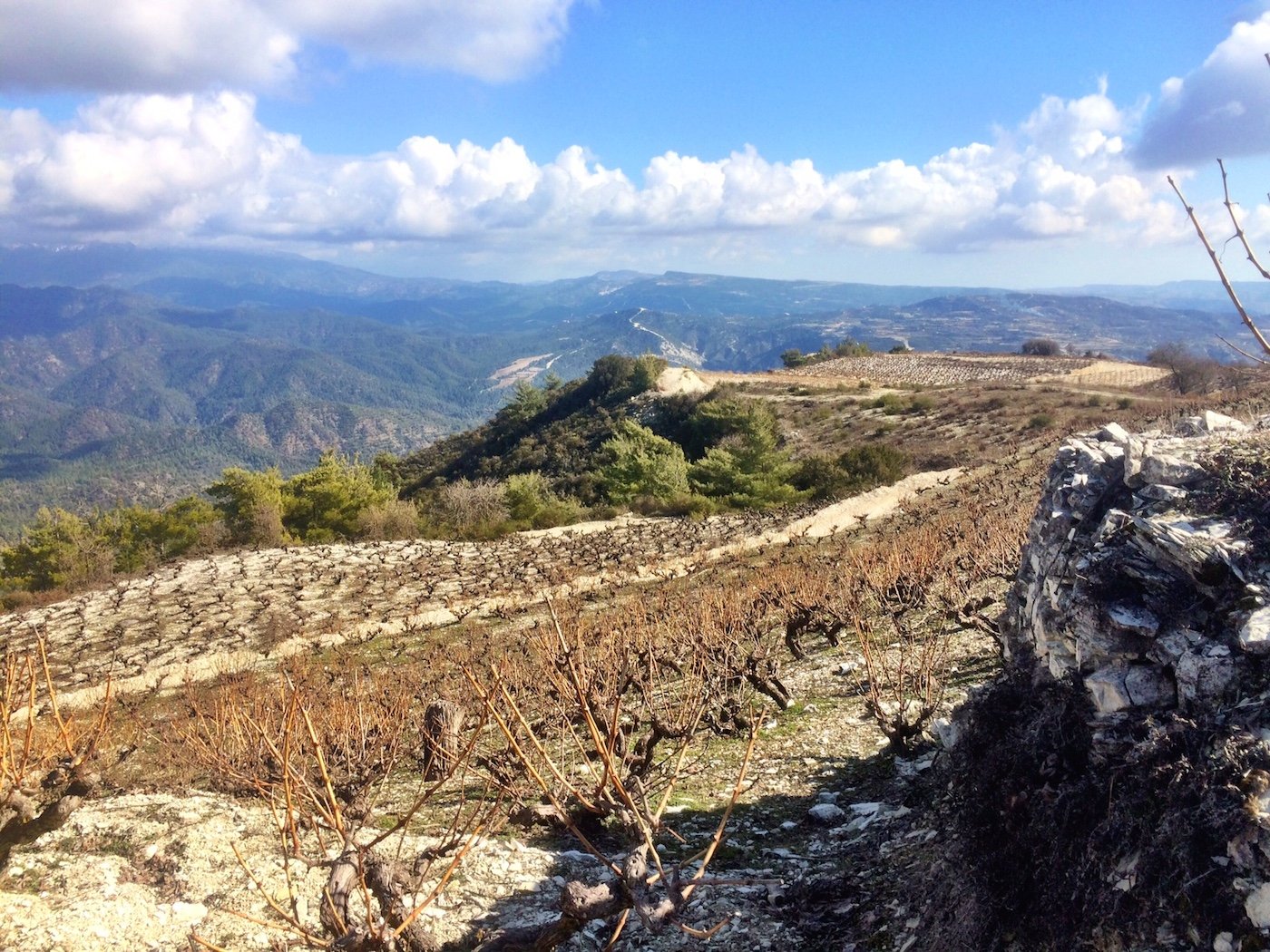
Reading Time: 5 minutes
Renowned wine critic Jancis Robinson said in 2013, “Some of the worst wine I have tasted since I started writing about wine was what was available the one time we went on holiday to the far-eastern Mediterranean island of Cyprus in 1983.”
That may have been a long time ago, but that line was stuck in my head as our travel dates drew nearer. Are the Cypriot wines still awful? The island of Cyprus is located in the eastern Mediterranean, south of Turkey and near to Lebanon. Would it be too hot for wine grapes? Is there any winemaking talent there?
As we circled the island, preparing to land, those questions kept running through my head. We were about to embark on a tasting trip through Cyprus. A place that has always sparked Charine’s curiosity, as well as mine to a lesser extent.
A few months ago, we bumped into a representative from the Cyprus Tourism Organization in Tbilisi, Georgia of all places. Fast-forward a few months and we found ourselves landing in Larnaca, Cyprus. The itinerary was put together by the head of wine tourism at the Cyprus Tourism Organization and the president of the Cyprus Sommeliers Association.
We visited two to three wineries every single day during our time in Cyprus. The schedule was intense but we walked away with a good grip on the Cypriot wine scene. More articles will be on our website over the next few months but here are some initial observations after tasting over 200 Cypriot wines from nearly 30 different producers.
Beautiful Vineyards
Cyprus has never seen the pest phylloxera, which nearly eradicated all of Europe’s vineyards in the early 1900’s. This means that many of the vineyards are old and on their own rootstock. More than 90% of the wine grapes in Cyprus are from goblet-trained bush vines. Some of these plants are over 100 years old. For wine nerds, something about bush vines is magical. I can’t put my finger on it, but whenever we passed one of these vineyards, we’d stop the car and take a slow walk through it. The climate in Cyprus is hot and dry, so most vineyards need high elevation to escape the heat. Some of these plots in Cyprus reach 1,400 meters in elevation.
Mountainside vineyards covered in bush vines? That’s a wine geek’s wet dream.
Check out the preview video of an upcoming episode of Exotic Wine Travel below. We are at 1,150 meters amongst old bush vines.
Xynisteri… Xynisteri???
This white grape is indigenous to Cyprus and is the most planted grape on the island. It is described as a neutral grape like the Spanish grape Palomino. Xynisteri is one of the two featured grapes that go into the dessert wine Commandaria.
The last few years, producers have been focusing on making white dry wine from the grape. It shows a lot of promise, even the least inspiring producers make solid Xynisteri. The excellent producers are using the grape to make wines ranging from fresh and fruity, to barrel fermented, and even botrytized.
One problem we found is that the market is voracious and causes nearly all producers to bottle their Xynisteri too early. This is good for the producers who can benefit from some immediate profit but leads to wines that are not ready to drink. For more experienced tasters, this is evident on the palate.
International Grapes
There are many international grapes grown in Cyprus. We saw wines made from Sauvignon Blanc, Chardonnay, Semillon, Riesling, Cabernet Franc, Cabernet Sauvignon, Grenache, Mataro (Mourvedre), Syrah, and Merlot.
Many producers raved about how Syrah is acclimating well to the hot Cypriot climate. The wines we tasted made from Syrah resembled jammy, spicy Australian Shiraz. These wines we tasted were ripe, big, and high in alcohol. Most were well made and delicious. A few of these Cypriot Shiraz wines were of excellent quality, that being said, many lacked depth and complexity.
Wines made from Cabernet Sauvignon really surprised us, especially those from old bush vines. Some of these examples were shockingly good – showing depth, concentration, and ripe fruit without obsessively high alcohol. These wines also showed a great deal of vegetal and herbal notes – very exciting!
Sadly, with the exception of a few producers, the wines made from Chardonnay need a lot of improvement. The few examples of wines we tasted from Viognier were much more promising. They were oily and showed varietal character. With the climate in Cyprus, it seems as if the Rhöne grapes like Marsanne and Roussanne would fair best for international white wines.
Rosé and Entry-Level Reds
Cypriot rosé is a whole new animal in terms of wine. The rosé wines are not light blush in style. Cypriots like their rosé with deep color, no residual sugar, and a touch of tannic tug. One wine producer poured his rosé and jokingly said, “I hope you enjoy this Pinot Noir.” Humor aside, some of these rosé were very serious with a beautiful meatiness to them. They paired well with the Cypriot Meze.
Entry-level red wines from good producers were very good. They were usually blends of international and Cypriot varieties. Many showed good structure. In many parts of the world, entry-level reds are a bit off-dry, with residual sugar left in them to soften flavors for the mass market. The Cypriot examples we tasted were bone-dry with firm tannins and a touch of complexity.
Cypriot Indigenous Varieties
Besides Xynisteri, there are several other indigenous varieties that producers are experimenting. Most of the country is covered in Xynisteri and Mavro because they are used to make the sweet wine Commandaria, but there is a resurgence in reviving other varieties. We tasted white wines made from grapes like Morokonella, Spourtiko, and Promara. Varietal red wines we sampled included grapes such as Ofthalmo, Yiannoudi, and Maratheftiko. We will have more information about these grapes in future articles.
Commandaria!
The wine that Cyprus is most known for. It is rumored to be the oldest, continuously made wine in the world and possibly the oldest wine appellation. There are records that suggest the wine was made in the same way 5000 years ago! Richard the Lionheart served this sweet wine at his wedding after encountering it during the Crusades in the 12th century.
These wines are lusciously sweet, nutty, and oxidative in style, and are very undervalued in the world of great wine. A few of the examples we tasted were shockingly good. It wasn’t just the surprise factor, some were among the best sweet wines that we have ever tasted. We especially liked the example from The Anama Concept. Lefteris Mohianakis makes the wine and his wife Kristina Mohianakis is packaging the wine in a modern way, but more on that in future articles.
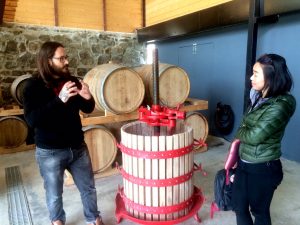
Lefteris Mohianakis, co-founder and winemaker at The Anama Concept showing Charine the old-fashioned grape press he still uses.
Cypriot Cuisine
When we sat down at a restaurant and ordered Cypriot Meze, we were in for a surprise. The places that we have been around the world use meze to describe appetizers. Cypriot Meze is a full feast that is impossible to finish. The food is Mediterranean, so expect lots of olive oil, bread, fresh vegetables, lamb, pork, and fish. Most produce is grown locally in Cyprus and the standard is outstanding. The local wines, especially darker Cypriot rosé, compliment this exciting cuisine.
One of our favorite gastronomic experiences in Cyprus was at Our House Vavla. Donna Marie and George moved back to the tiny village of Vavla after running a restaurant in Long Island, New York. They are a beautiful couple with a great life story to match. The guesthouse is their actual home, the place George grew up in before heading to America. We didn’t stay the night there, but the stone rooms are beautiful and the views are to die for. They do take reservations for dinner (24-hour notice) if you aren’t staying there.
Donna Marie’s cooking can compete with any meal that we have had around the world. If this video doesn’t get your mouth watering, then you don’t like food.
So… Cypriot Wine?
We were shocked by what we found in Cyprus. There is a lot going on in an industry filled with winemaking talent. The high-elevation vineyards are beautiful and we found a few GREAT wines. The industry has come a long way since Jancis first visited in 1983. Stay tuned to the website for more in-depth articles and videos on the Cypriot wine scene.
Disclaimer: The Cyprus Tourism Organisation provided us with flights, hotel accommodation, a car rental, and a few meals. Parts of our stay were sponsored by The Annabelle Hotel (Paphos) and Saint Elena Hotel (Larnaca). A few wineries provided us tasting samples, but most of them simply gave us their time. The opinions of the wines are our own and we are under no obligation to give favorable reviews.


